Science Gift Guide 2018
By The Editors
STEM-related books for this or any season
November 30, 2018
Science Culture Communications Review Scientists Nightstand
It's no secret, we love books: reviewing, excerpting, interviewing their authors, even the sensations of handling a book (though that doesn't keep us from looking at e-books, too)! For this holiday season and beyond, we’ve selected some STEM-related books suited for science enthusiasts of all ages and interests.
Please have a look below at some of the books we've enjoyed this year, and come back—through the first few weeks of December, we'll keep adding to our list. Happy holidays!
Jump to: Books for Children
Science Prose
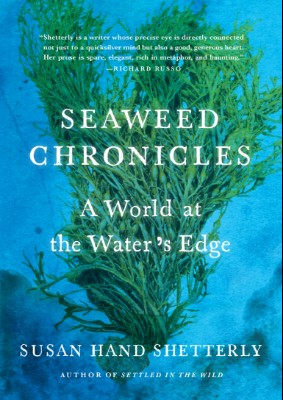
Seaweed Chronicles: A World at the Water’s Edge by Susan Hand Shetterly. Workman, 2018. $25.
In this piece of nature writing, Susan Hand Shetterly uses seaweeds as the common thread that weaves together the cultural, economic, and ecological relationships to ocean resources in Maine, illustrating how this photosynthetic life provides a foundation for everything else. Shetterly has a knack for summarizing big environmental issues, such as the loss of fisheries, without divisiveness—with an understanding of the humanity of fishermen, local businesses, scientists, and policymakers and the hard choices we all have faced that led us to a point of plundering our own communities’ futures. No one wanted the whales, bluefin tuna, halibut, cod, haddock, herring, lobsters, and so on to decline, and yet they have. To make matters worse, water in the Gulf of Maine is warming faster than in most other bodies of water in the world. Shetterly maps a course forward, grounded in her own local work to save habitat. She likens fisheries restoration to “a cat’s cradle, stringing together the repairs and protections of an entire ecosystem.” Her love, wonder, and hope for the place where she lives and the connectedness of all living things in it comes across in elegant prose.—Katie L. Burke
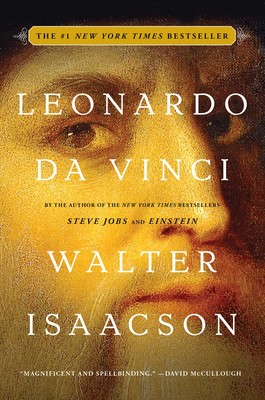
Leonardo da Vinci by Walter Isaacson. Simon & Schuster, 2017. $22.
If you too carry pen and paper wherever you go, then you already appreciate one of the many habits of Leonardo da Vinci, who kept a small notebook hanging from his belt. It's one of the many details Walter Isaacson includes about the quintessential Renaissance Man in this extensive and highly annotated biography. Drawing from many other historical accounts, biographies, and his own examination of some of Leonardo's works in person, it is as if Isaacson set for himself the task of presenting the 'universal measure of Leonardo' after reading Leonardo's own intention to know universale misura del huomo (the universal measure of man). Isaacson summarizes that intention as "the quest that defined Leonardo's life, the one that tied together his art and his science." Such pronouncements are common among biographers, who sometimes toil too much in their attempt to encapsulate a life. Isaacson's gift in this book is instead in presenting the reader with his vast research and including those parts of Leonardo's life that are far from genius or, indeed, quite quirky, making plain Leonardo's humanness and so inviting the reader to connect.—Robert Frederick

City Unseen: New Visions of an Urban Planet by Karen C. Seto and Meredith Reba; Foreword by Kathryn D. Sullivan. Yale University Press, 2018. $35.
In this 243-page coffee-table book, authors Karen C. Seto and Meredith Reba, both experts in environmental fields, select satellite imagery from across the Earth to show an urbanizing planet. Satellites can image more spectra than the visible light we see through our eyes, rendering the invisible visible and also offering a brilliant color palette that Seto and Reba use to emphasize features in particular images. In their selections of city landscapes, shown in aerial views with various scales and electromagnetic wavelengths, the authors exhibit the ways urbanization is shaping, and is shaped by, natural landscapes. In so doing, they “highlight lessons from the past” and “make clear our power to shape the future.”—Katie L. Burke

I Feel You: The Surprising Power of Extreme Empathy Written by Cris Beam. Houghton Mifflin Harcourt, 2018. $26.
Yes, even empathy is "extreme" these days, though the various definitions of empathy that Cris Beam discusses in her engaging, inquisitive stories vary widely. In the end, Beam identifies her favorite forms of the concept, but also explores how marketers employ empathy (identifying "latent needs and feelings... and then... building new things to sell"), those who are probing the brain to find empathy's neurocircuitry (or possible lack thereof in psychopaths), and those who ultimately forgive their abusers, either on a societal scale (South Africa's Apartheid) or a personal one (Beam's own). It's Beam's own story that provides structure to the book and explains her motivation to write it. Courageously, Beam leaves in details that reveal her imperfect, empathetic growth, making space for the reader not only to learn about empathy's power but to grow along with her.—Robert Frederick
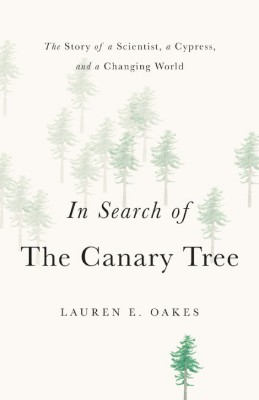
In Search of the Canary Tree Written by Lauren E. Oakes. Basic Books, 2018. $27.
I wouldn’t call most books about climate change enjoyable, which is why I often approach reading about the topic (a big part of my job) with a sense of moral obligation mixed with reluctance. But this book stands out as different. I did enjoy it. Oakes brings the gift of personal perspective, memoir, and hope in the face of loss to her story of studying yellow-cedar tree decline off the coast of Alaska. Rapid dieoffs of this endemic tree occurred over the past several decades as warming in the northern latitudes has accelerated. Oakes likens the tree to a canary in a coal mine, the title’s “canary tree.” After completing her scientific work—her dissertation to understand how the forest habitat and the people who lived with the trees were responding to the dieoff—she says, “Something felt unresolved, and it was far more personal than scientific.” This book tells the story that still felt untold, the “story of becoming an unexpected optimist against a backdrop of dying forests.” Oakes accomplishes this by acknowledging loss and the difficulties ahead, and moving through it with readers. I recommend this book to anyone who is emotionally processing bearing witness to environmental tragedies. Oakes also does a great job describing the unexpected challenges and self-doubts that are unique to field science and graduate school, as well as how she met those challenges, making this book especially valuable to anyone considering or starting doctoral work in field ecology, or mentoring such research.—Katie L. Burke
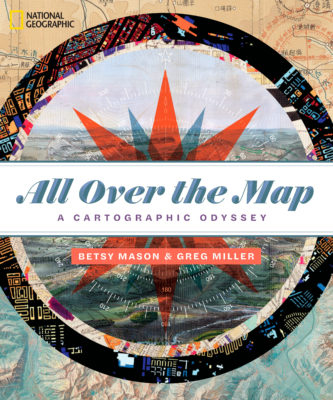
All Over The Map: A Cartographic Odyssey Written by Betsy Mason and Greg Miller. National Geographic, 2018. $50.
“If you love maps, this blog is for you” is the title of Greg Miller’s 2016 inaugural post for National Geographic Society’s blog All Over The Map, which introduced his and co-author Betsy Mason’s fascination with maps and the stories behind them… at least on National Geographic’s website (prior to that, the pair had authored Wired’s Map Lab, which ran from 2013-2015). More than 100 blog posts later—and still going strong—these co-authors’ proclamation of themselves as “map geeks” is more than evident, and it's done in the kind of infectious, enthusiastic way that prompts others’ curiosity. Mason and Miller’s cartographic odyssey—in book form—contains more than 200 maps and delights far more than map lovers: It’s for anyone who loves a good short story. Readers can easily find themselves dipping in for a one-pager about, for example, how a British designer and researcher is experimenting to create “olfactory snapshots of cities” by recruiting volunteers to map a city’s “ever changing scents” or, alternately, find that hours have passed by while reading all the stories of an entire section of the book, with section topics ranging from “Conflict and Crisis” to “Science” to “Art and Imagination.” This modern version of an ancient illuminated manuscript certainly prompted this reader to point at its pages and say, sometimes to random strangers, “You should see this!” Does that make me also a map geek now?—Robert Frederick
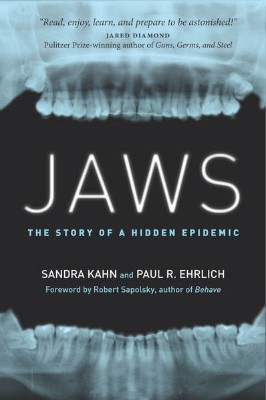
Jaws: The Story of a Hidden Epidemic Written by Sandra Kahn and Paul R. Erlich. Stanford University Press, 2018. $25.
Orthodontist Sandra Kahn and evolutionary biologist and author Paul R. Ehrlich team up on this provocative and compelling case that modern teeth are crooked—or maloccluded as they say in orthodontics—because of lifestyle changes more so than genetics. They argue that jaw development changed dramatically after the Industrial Revolution, which they trace to the higher availability of softer, cooked foods and baby foods, as well as an increase in mouth breathing because of poor posture and more allergens and stuffy noses. The increase in mouth breathing and poor jaw development is not without effects: In one example they delve into, sleep apnea is on the rise, often overlooked, and can seriously affect people’s quality of life, if not outright kill them. The authors say that braces are often not effective at straightening teeth in the long-term, because they do not address the real root of the problem. Instead, the authors give simple solutions for parents with children beginning to show symptoms of poor jaw development, such as mouth breathing (especially while sleeping), showing gums when smiling, chewing with the mouth open, and a receding chin. Summarized in chapter 7, “What Can You Do?,” these solutions are meant to establish oral postural habits that help the jaw develop correctly, with quite profound results that the authors document in before and after photos.—Katie L. Burke

How We Talk: The Inner Workings of Conversation Written by N. J. Enfield. Basic Books, 2017. $27.
As linguist E. N. Enfield teasingly admits in the introduction to How We Talk, "linguistics—the line of research responsible for understanding language—is not the source of many of the findings I will describe in this book." Instead, Enfield's work is informed by research on everyday conversations (recorded as audio and video files) and nearly two decades of collaboration with colleagues at the Max Planck Institute for Psycholinguistics, Nijmegen, and the University of Sydney. The gift of this book—summarizing such laborious research—is presented in the form of lecture-like chapters that one might expect to hear at a generalist's scientific symposium: entertaining to an already interested public, containing references to the works of other researchers (some of whom may be attending the symposium), and arguing that other scientists of language should engage in the same kind of documentary research. There's no explicit narrative to drive the reader from one chapter to the next. But as a member of an already interested public, I felt no need of one, imagining myself instead overhearing the snippets of everyday conversation sprinkled throughout the book, what sense I might make of the timing of pauses, and learning the hallmarks of conversation that characterize how we all talk regardless of which of the six-thousand distinct spoken languages we speak.—Robert Frederick
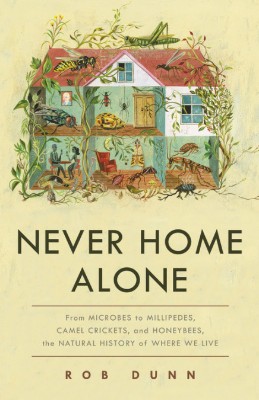
Never Home Alone Written by Rob Dunn. Basic Books, 2018. $19.
“The average American child spends 93 percent of his or her time in a building or a vehicle,” writes biologist Rob Dunn in his latest book. “The floor area indoors in Manhattan is now threefold greater than the dirt area outdoors.” And yet the insects, protists, fungi, and bacteria that make up the ecosystems of our homes are overlooked—unless they cause us harm. Dunn and his colleagues began to inventory life in homes, expecting to find hundreds of species. They found more than 200,000. Most of this life is benign or beneficial to humans. “Unfortunately, just as scientists have begun to discover the goodness, the necessity even, of many of the species in our homes, society at large has stepped up efforts to sterilize the indoors,” says Dunn. We are losing our allies, and as we do so, encouraging the cockroaches and other pests and the pathogenic, even antibiotic-resistant, bacteria. Dunn lays out his team’s discoveries about the life that makes up the ecosystems of our homes, and what we know about their effects on us. But this research is just the beginning, and many unknowns remain. What Dunn makes clear in this book is that we need more rewilding and more biodiversity around us in order to be well.—Katie L. Burke
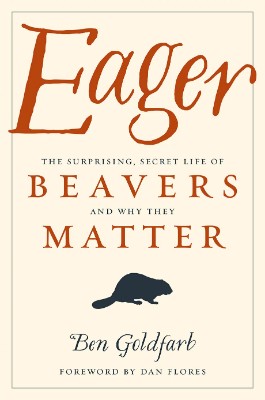
Eager: The Surprising, Secret Lives of Beavers and Why They Matter Written by Ben Goldfarb. Chelsea Green, 2018. $25.
North Americans live in a beaver-deficient society and most of us don’t even know that our most familiar landscapes are unhealthy ones. In this mix of environmental history, policy, ecology, and fun and adventure, journalist Ben Goldfarb reveals beavers as great changemakers of North American history—and reveals their necessary place in dealing with myriad wicked environmental problems, from flooding to carbon storage to water pollution. Goldfarb says we can learn to coexist with beavers—and we’ll be healthier for it. Plus, a bonus: We’ll have even more wild and goofy beaver stories.—Katie L. Burke
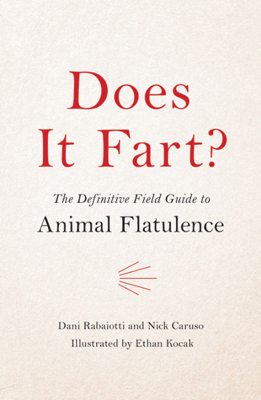
Does It Fart? Written by Dani Rabaiotti and Nick Caruso; illustrated by Ethan Kocak. Hachette, 2018. $10.
Authors Dani Rabaiotti and Nick Caruso detail the science behind farts of all kinds, explaining, for example, the hows and whys of the smelliest, the loudest, and the most silent (if not literally deadly), as well as discussing the functions farts serve and how different species deploy unique fart traits to their advantage. Cheeky illustrations by Ethan Kocak add to the book’s general irreverence, as he depicts a range of animals at their gassiest. Read our full review of this book.—Katie L. Burke
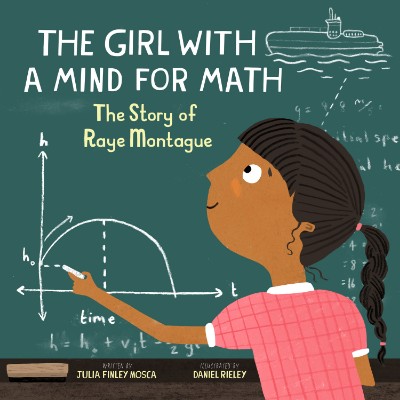
The Girl With a Mind for Math: The Story of Raye Montague Written by Julia Finley Mosca. Illustrated by Daniel Rieley. The Innovation Press, 2018. $15. Ages 7–10.
Part of a series of books for younger children called Amazing Scientists, this book focuses on Raye Montague, an African-American woman who was the first to computer-design a Navy ship, using her exceptional math skills. Written in rhyming couplets, the book follows Raye from her first visit to a submarine at the age of seven—where she also receives her first insult that she can’t be an engineer—and it continues (in rhyme) to decry the inequality of segregated schooling at the time. Inequality follows Raye during her career, from being overlooked to not receiving an invite to the opening for the ship she designed. Eventually Raye wins out, and receives proper accolades. The book includes at the end an interview and more detailed biography, which can provide more context for readers wishing to know more.—Fenella Saunders
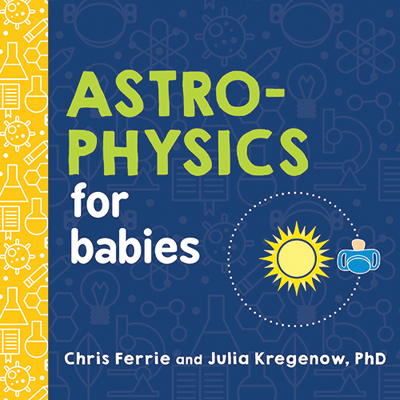
Astrophysics for Babies Written by Chris Ferrie and Julia Kregenow. Sourcebooks Jabberwoky, 2018. $10. Ages 0–2.
Physicist Chris Ferrie is a prolific author of board books that examine complicated scientific concepts through simple statements and illustrations. His series of Baby University books covers topics such as quantum physics, electromagnetism, and organic chemistry. The latest entry in that series is Astrophysics for Babies, which he co-wrote with astronomer Julia Kregenow. The charming book starts with a simple comparison – a ball is the same shape as Earth – and grows from there: the Earth is the same shape as the Sun, the Earth orbits the Sun, the Sun is a star that looks big because it is close, other stars look small because they are far. So far so good, these are terms I have used with my own children to explain abstract ideas. But Ferrie and Kregenow don’t stop with the easy explanations. Still using simple sentences and accessible language, they walk through the creation of atoms, the periodic table of elements, and the life cycle of stars. Finally, they land on the part that will make little eyes pop: “The atoms of old stars live on in you.” The authors’ sweep from the very big to the very small, the abstract to the personal, makes for an engaging read that will pique kids’ interest and get them asking questions about the universe.—Stacey Lutkoski
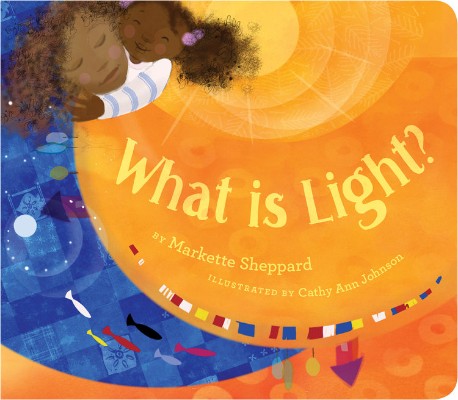
What Is Light? Written by Markette Sheppard. Illustrated by Cathy Ann Johnson. Agate Publishing, 2018. $8. Ages 2–5.
Light was one of the first words I learned, and my parents say light switches fascinated me as a baby. I bet I would’ve liked Markette Sheppard’s What Is Light? in my early years. This book for little ones is an exploration of the many meanings of light: It’s a physical phenomenon that you can see (emanating from stars and fireflies, for example), and it’s also a figurative word for something you feel (in hugs from your mom or in nature scenes like the flight of a butterfly). The book encourages young people to not only explore seeing and feeling light, but ultimately, to find it within themselves. With a lovely message that melds science and emotional awareness, this book is a calming read for parent and child.—Katie L. Burke
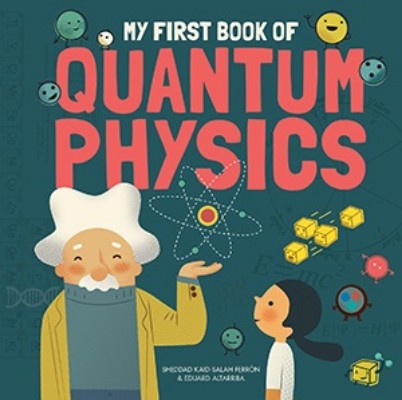
My First Book of Quantum Physics Written by Sheddad Kaid-Salah Ferrón; illustrated by Eduard Altarriba. Button Books, 2018. $18. Ages 5–11.
Written much like a coffee-table book for kids, this beautiful book excels at graphic design, with short sections and boxes where young readers can jump in and out of segments about famous scientists, classic experiments, basic concepts, and some experiments they can try themselves. From the periodic table to quantum entanglement, complicated topics are presented in an approachable way, and at least give young readers the basic concepts.—Fenella Saunders

Kid Scientists: True Tales of Childhood from Science Superstars Written by David Stabler; illustrated by Anoosha Syed. Penguin Random House, 2018. $14. Ages 8–12.
When Kid Scientists landed on my desk, I was worried that it would be a Teen Titans-style book about young versions of our favorite thinkers using science to solve crime or get into and out of mischief. The subtitle, however, pointed to the much more interesting content inside: True Tales of Childhood from Science Superstars. Author David Stabler chose an exciting and diverse array of scientists and examined how their early curiosity led to their notable careers. I particularly enjoyed reading about the often circuitous paths the scientists took. Not all of them were child prodigies, and some were very late bloomers—Stephen Hawking didn’t learn to read until he was 8 years old. The book is recommended for 8- to 12-year-olds, who could read it independently, but I read chapters to my 5-year-old son as bedtime stories, and he was riveted by the narrative. He especially loved Anoosha Syed’s comic-strip-style illustrations, and laughed hysterically at scenes such as Marie Curie playing a practical joke on a cousin by nailing all of his furniture to the ceiling. This book is a great way to encourage kids who already love science to pursue their interests as well as to show kids who are not motivated by traditional schooling that there are many paths to greatness.—Stacey Lutkoski

Science Comics: The Brain—The Ultimate Thinking Machine Written by Tory Woolcott; illustrated by Alex Graudins. Macmillan, 2018. $13. Ages 9–13.
The Science Comics series, about a dozen titles so far with a number of new ones due out this year, has included everything from dinosaurs to robotic drones. This installment, called The Brain: The Ultimate Thinking Machine, differs from some of the other titles in that it wraps the information presented about the topic in a story that includes a mad scientist trying to operate on a scout who wants to sell him cookies. I’m never thrilled with mad scientist tropes, but it’s appealing to the 4th-grade age group to which this book is aimed. However, younger kids may find some of the imagery a little scary, which was not the case with some previous titles, such as the one about coral reefs. The information about the brain and nervous system is presented in a clear and engaging way, without talking down to kids, but be prepared to learn a whole lot of anatomical vocabulary. This entire series has been fantastic, and we’re looking forward to this year’s new titles.—Fenella Saunders
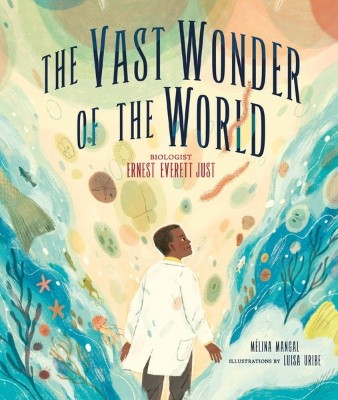
The Vast Wonder of the World: Biologist Ernest Everett Just Written by Mélina Mangal; illustrated by Luisa Uribe. Lerner, 2018. $15. Ages 6–9.
This illustrated biography of biologist Ernest Everett Just encourages children to see the world through his eyes and life experiences. “Ernest was not like other scientists,” writes author Mélina Mangal. “He saw the whole, where others saw only parts. He noticed details others failed to see. On the dock at dawn, he wrote poetry.” Growing up in the segregated South, Just demonstrated a love of observation and a dedication to his studies and his family at a time when “few expected a black man to do so well.” The illustrations by Luisa Uribe paint scenes of Just exploring the marine world and the microscopic world, and observing the life around him as he grows up and becomes a professor at Howard University and the world’s leading expert on the beginning of life from a fertilized egg. Among these unfolding scenes, Mangal intersperses accounts of the obstacles Just encountered because of his race.—Katie L. Burke

Skyward: The Story of Female Pilots in WWII Written by Sally Deng. Flying Eye Books, 2018. $24. Ages 7 and up.
Deng tells us the story of three women around the world who were pilots during World War II, beginning with their first childhood experiences with airplanes that gave them the flying bug. The book pulls few punches on the discrimination and danger that they faced, and the reality of those times can be jarringly serious for younger readers. But at the same time, the book provides important context for kids to understand the lengths that women had to go to in order to gain acceptance in the military.—Fenella Saunders
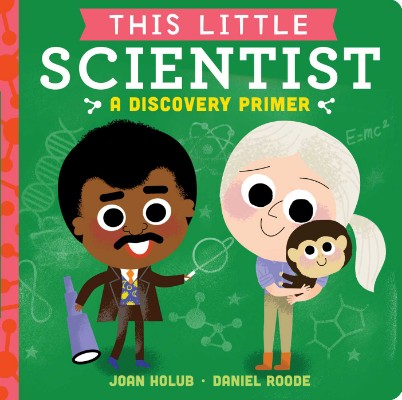
This Little Scientist: A Discover Primer Written by Joan Holub; illustrated by Daniel Roode. Simon & Schuster, 2018. $8. Ages 3–5.
This Little Scientist, written by Joan Holub and illustrated by Daniel Roode, offers an engaging way to start talking about science with the youngest members of the family. The board book uses fun rhymes to introduce kids to the stars of the science world, from Isaac Newton through Neil deGrasse Tyson. Roode gave the scientists round, friendly faces that smile out from the book and are, frankly, adorable. I especially appreciate the breadth of coverage in this tiny tome. Holub chose to highlight a group of scientists that are diverse in terms of time period, race, gender, and area of study. The obvious heavy-hitters are featured—Curie, Einstein, Goodall—but also less obvious figures such as Maria Sibylla Merian, who exemplified a very different way of doing science. This Little Scientist is a great way to integrate science into everyday routines like bedtime stories so that kids can start dreaming of mysteries they can explore tomorrow.—Stacey Lutkoski
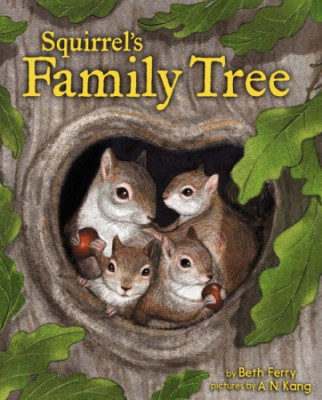
Squirrel's Family Tree Written by Beth Ferry. Illustrated by A. N. Kang. Orchard, 2019. $18. Ages 3–5.
This short book for younger children is written in brief rhyming segments, but despite the brevity of the text, it manages to impart a surprisingly rich amount of information on the ways that squirrels and oak trees depend on one another for survival. The absolutely adorable illustrations make it quite an engaging story for the younger set as well.—Fenella Saunders
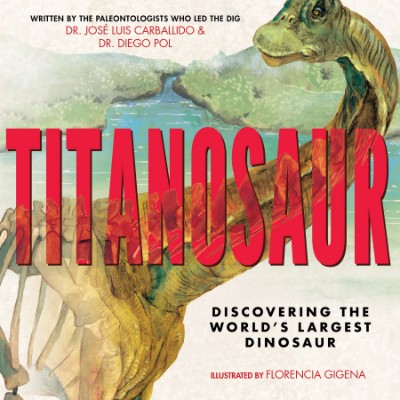
Titanosaur: Discovering the World’s Largest Dinosaur Written by José Luis Carballido and Diego Pol. Illustrated by Florencia Gigena. Scholastic, 2019. $18. Ages 5–7.
Written by the paleontologists who made the discovery of this enormous fossil, this book conveys for children the excitement and the serendipity of dinosaur discovery. Illustrations coupled with photographs make the discovery more real for kids, and give them an accurate sense of just how big this dinosaur was. The teamwork aspect of paleontology is fortunately given a central role in the story. Kids (and maybe adults) will come away from the book exclaiming “I want to do that!”—Fenella Saunders

Who Were the Tuskegee Airmen? Written by Sherri L. Smith and Who HQ. Illustrated by Jake Murray. Penguin Random House, 2018. $6. Ages 8–12.
Although this is a book for younger readers, it doesn’t sugar-coat the situation at the time depicted in the book, when “white guys” were shocked to find out that “black guys” were pilots, and “A 1925 military report said that black men were not as smart or as brave as white men.” The book is just as blunt in countering these claims, but be prepared to explain some history to kids who will likely be scandalized that such inequality ever happened. The book is a great overview of the hardships the Tuskegee Airmen faced, in addition to their bravery and accomplishments, as well as the ingenuity that early African-American pilots employed to find flight training.—Fenella Saunders
American Scientist Comments and Discussion
To discuss our articles or comment on them, please share them and tag American Scientist on social media platforms. Here are links to our profiles on Twitter, Facebook, and LinkedIn.
If we re-share your post, we will moderate comments/discussion following our comments policy.